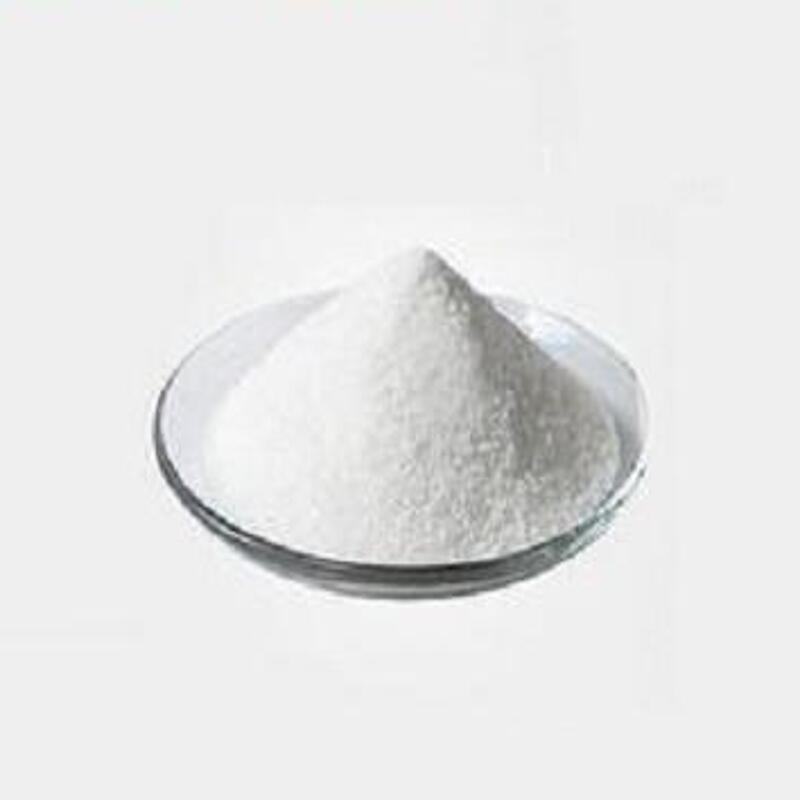-
Categories
-
Pharmaceutical Intermediates
-
Active Pharmaceutical Ingredients
-
Food Additives
- Industrial Coatings
- Agrochemicals
- Dyes and Pigments
- Surfactant
- Flavors and Fragrances
- Chemical Reagents
- Catalyst and Auxiliary
- Natural Products
- Inorganic Chemistry
-
Organic Chemistry
-
Biochemical Engineering
- Analytical Chemistry
-
Cosmetic Ingredient
- Water Treatment Chemical
-
Pharmaceutical Intermediates
Promotion
ECHEMI Mall
Wholesale
Weekly Price
Exhibition
News
-
Trade Service
Recently, Jiangnan University Biological Engineering Institute Professor Liu Chen Jian Long Fellow team in the research group of transcription factors and co-factors engineering works to improve policy coordination for N- acetylglucosamine glucose production made important progress, research results "Synergistic improvement of N-acetylglucosamine production by engineering transcription factors and balancing redox cofactors" was officially published on metabolic Engineering (IF=9.
783) (https://doi.
org/10.
1016/j.
ymben.
2021.
07.
012)
.
783) (https://doi.
org/10.
1016/j.
ymben.
2021.
07.
012)
.
Regulating the transcription level of key genes in metabolic pathways is a commonly used strategy in metabolic engineering, but this strategy often fails to significantly increase the titer of the target product, and even leads to an imbalance in the intracellular carbon/nitrogen metabolic network and cofactor network of engineered strains
.
Global transcription regulation engineering uses transcription factors with specific functions to activate or inhibit the coordinated expression of multiple genes in specific metabolic pathways, thereby effectively improving the synthesis of target metabolites
.
At the same time, a variety of cofactors are generally involved in the synthesis of target metabolites, and problems such as insufficient cofactor supply and cofactor imbalance often become important bottlenecks for efficient biosynthesis
.
Therefore, in order to achieve efficient synthesis of target metabolites, it is essential to balance the carbon/nitrogen metabolic transcription network and redox metabolic network of engineered strains
.
.
Global transcription regulation engineering uses transcription factors with specific functions to activate or inhibit the coordinated expression of multiple genes in specific metabolic pathways, thereby effectively improving the synthesis of target metabolites
.
At the same time, a variety of cofactors are generally involved in the synthesis of target metabolites, and problems such as insufficient cofactor supply and cofactor imbalance often become important bottlenecks for efficient biosynthesis
.
Therefore, in order to achieve efficient synthesis of target metabolites, it is essential to balance the carbon/nitrogen metabolic transcription network and redox metabolic network of engineered strains
.
In response to the above problems, the study first verified the effects of seven global transcriptional regulators of carbon metabolism, GlxR, RamB, SugR, LldR, FruR and GntR1, on the production of GlcNAc by Corynebacterium glutamicum
.
The results showed that the GlcNAc yield of the recombinant strains overexpressing RamA was increased most obviously, while the GlcNAc yield of the strains highly expressing RamB, LldR and FruR decreased
.
Therefore, a mutant library of RamA's A domain (transcription regulatory domain) and B domain (DNA binding domain) was further constructed, and a high-throughput screening method was used to screen positive mutants and carry out combinatorial mutations
.
By expressing the combined mutant transcription factor RamAM, the titer of GlcNAc in the shake flask was increased to 16 g/L.
The reason for the high GlcNAc production of the mutant strain was further analyzed through transcriptome sequencing and ITC experiments
.
Second, the researchers developed a dCpf1 CRISPRi system in Corynebacterium glutamicum, and found that the transcription factors RamB, LldR, FruR, and AmtR have a negative regulatory effect on the production of GlcNAc.
Therefore, the researchers applied the CRISPRi system to interference The expression of related transcription factors that inhibit the synthesis of GlcNAc, thereby promoting the titer of GlcNAc to further increase to 27.
5 g/L; later, because the intracellular cofactor metabolic network can modify the oxidation-reduction reaction-related enzymes in the synthesis pathway of the target product To balance the preference of cofactors, the researchers used database search and protein structure sequence alignment to compare the key enzymes in the GlcNAc synthesis pathway, glyceraldehyde-3-phosphate dehydrogenase (GAPDH) and malate dehydrogenase (MDH).
A series of mutations in amino acid residues near the factor binding pocket
.
Through screening, it was found that the mutants GAPDH N208R/F323S and MDH E47G/A51S had beneficial effects, which increased the titer of GlcNAc in the shake flask to 36.
9 g/L; finally, in order to expand the production scale of GlcNAc, the researchers added recombinant glutamine Corynebacterium acidi was scaled up in a 50-L fermenter, and the GlcNAc titer obtained from the scaled-up production reached 117.
1 g/L, which was 6.
62 times that of the control group.
At the same time, the conversion rate of glucose to GlcNAc also increased from 0.
19 g/g Increase to 0.
31 g/g
.
A series of strategies developed by the institute help to optimize the global transcription level of the intracellular carbon and nitrogen metabolism network and the level of intracellular cofactors, providing new methods and ideas for restructuring the microbial metabolic network and improving the performance of microbial cell factories
.
.
The results showed that the GlcNAc yield of the recombinant strains overexpressing RamA was increased most obviously, while the GlcNAc yield of the strains highly expressing RamB, LldR and FruR decreased
.
Therefore, a mutant library of RamA's A domain (transcription regulatory domain) and B domain (DNA binding domain) was further constructed, and a high-throughput screening method was used to screen positive mutants and carry out combinatorial mutations
.
By expressing the combined mutant transcription factor RamAM, the titer of GlcNAc in the shake flask was increased to 16 g/L.
The reason for the high GlcNAc production of the mutant strain was further analyzed through transcriptome sequencing and ITC experiments
.
Second, the researchers developed a dCpf1 CRISPRi system in Corynebacterium glutamicum, and found that the transcription factors RamB, LldR, FruR, and AmtR have a negative regulatory effect on the production of GlcNAc.
Therefore, the researchers applied the CRISPRi system to interference The expression of related transcription factors that inhibit the synthesis of GlcNAc, thereby promoting the titer of GlcNAc to further increase to 27.
5 g/L; later, because the intracellular cofactor metabolic network can modify the oxidation-reduction reaction-related enzymes in the synthesis pathway of the target product To balance the preference of cofactors, the researchers used database search and protein structure sequence alignment to compare the key enzymes in the GlcNAc synthesis pathway, glyceraldehyde-3-phosphate dehydrogenase (GAPDH) and malate dehydrogenase (MDH).
A series of mutations in amino acid residues near the factor binding pocket
.
Through screening, it was found that the mutants GAPDH N208R/F323S and MDH E47G/A51S had beneficial effects, which increased the titer of GlcNAc in the shake flask to 36.
9 g/L; finally, in order to expand the production scale of GlcNAc, the researchers added recombinant glutamine Corynebacterium acidi was scaled up in a 50-L fermenter, and the GlcNAc titer obtained from the scaled-up production reached 117.
1 g/L, which was 6.
62 times that of the control group.
At the same time, the conversion rate of glucose to GlcNAc also increased from 0.
19 g/g Increase to 0.
31 g/g
.
A series of strategies developed by the institute help to optimize the global transcription level of the intracellular carbon and nitrogen metabolism network and the level of intracellular cofactors, providing new methods and ideas for restructuring the microbial metabolic network and improving the performance of microbial cell factories
.
Professor Liu Long is the corresponding author of the paper, and Deng Chen, a 2017 doctoral student in the School of Bioengineering, is the first author
.
The above-mentioned research work has been funded by the National Natural Science Foundation of China (32021005, 31930085), national key research and development projects (2018YFA0900300, 2018YFA0900504), special funds for basic scientific research operations of central universities (JUSRP52019A), and key R&D projects of Shandong Province (major scientific and technological innovation projects) ( 2019JZZY 011002) and other projects
.
.
The above-mentioned research work has been funded by the National Natural Science Foundation of China (32021005, 31930085), national key research and development projects (2018YFA0900300, 2018YFA0900504), special funds for basic scientific research operations of central universities (JUSRP52019A), and key R&D projects of Shandong Province (major scientific and technological innovation projects) ( 2019JZZY 011002) and other projects
.







